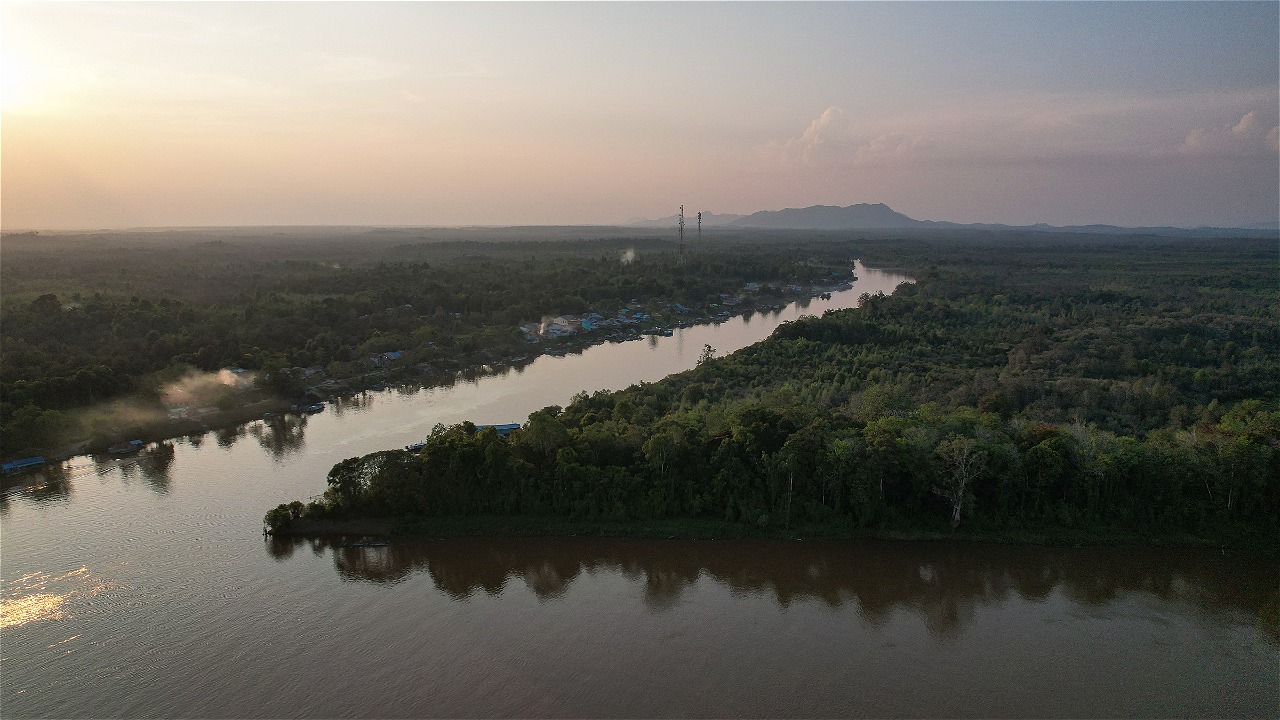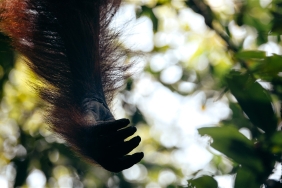IMPROVEMENT OF SINTANG DISTRICT SPATIAL PLAN
By: Lia Syafitri
SINTANG (1/9) - On Monday (1/9) 2014, a Memorandum of Understanding (MoU) was signed for the preparation of the Sintang District Spatial Plan Document (RTRWK) between the Sintang District Government and WWF-Indonesia. The cooperation agreement was signed by the Regent of Sintang and the Kalimantan Regional Leader, WWF-Indonesia, in the office of the Regent of Sintang. This spatial plan in the long term can provide real benefits for the environment, the community, and the parties in Sintang Regency.
The Regency Spatial Plan (RTRWK) is the result of structural form planning and spatial utilization patterns. Sintang District has completed the preparation of the RTRWK document in 2009. In December 2013, through Decree of the Minister of Forestry Number 936/Menhut-II/2013, a Map of Changes in Forest Area Designation of West Kalimantan Province was issued which became a reference in the preparation of spatial plans in West Kalimantan, including integrating it into the Sintang RTRWK.
"In Law Number 26 of 2007 concerning Spatial Planning, it is stated that the RTRWK is a general plan at the district level. The general spatial plan is a regional spatial planning tool that is prepared based on an administrative area approach which hierarchically consists of national spatial plans, provincial spatial plans, and district / city spatial plans," said Sintang Regent, Milton Crosby.
The Regent of Sintang highly welcomed the cooperation that was built. In relation to spatial planning, the Regent said he would strive to maintain forest areas above 50% of the total area of Sintang Regency, how the balance between development and the environment and the welfare of the community can be built properly.
"Through this collaboration, I hope to produce a document that can become one of the provisions for controlling and utilizing space in Sintang Regency in the next 20 years to 2034. I am very committed and grateful for this collaboration," he said.
Similar hopes were expressed by the Kalimantan Regional Leader of WWF-Indonesia, M. Hermayani Putera. "The process of preparing a spatial plan that is oriented towards long-term interests, refers to the views of science, the latest data and information, and takes into account the diversity of the region, the activities of each sector and also the development of society and the environment, which is a series of dynamic and inclusive dialogues," Herma explained.
The challenge is how the Sintang RTRWK that was prepared in 2009 remains in accordance with the demands of development and the development of the situation. "For this reason, we consider it important that the Sintang RTRWK must be refined in accordance with current conditions," added Rudi Zapariza, Project Leader Sintang-Melawi, WWF-Indonesia.
In order for the process of preparing the Sintang RTRWK document to be comprehensive and holistic, its implementation will be supported by a Technical Team jointly formed by the Sintang Regency Government and WWF-Indonesia, which in this case will also be supervised or monitored by the process of the Sintang Regency Government.
"Efforts to review the Sintang RTRWK need to be done in order to be in accordance with the vision and mission, district development plans and guided by the relevant laws and regulations outlined in the spatial policy. Guidelines in the field of spatial planning are interrelated with each other, so that each has its own function and is complementary," said Milton.
Both parties also hope that this MoU can be followed up at the next stage, in the form of ratification of the RTRWK through Regional Regulations as a provision for controlling space utilization in Sintang Regency.
For further information, please contact:
Amri Yahya | Spatial Planning Senior Officer, WWF-Indonesia West Kalimantan Program
Jl. Karna Sosial Gg. Wonoyoso II No. 3 | Tel. (0561) 734049 / HP. 0811576299 | Email: amriyahya@wwf.or.id





